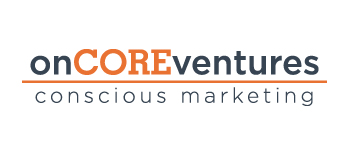Pay Per Click Advertising –

Why Do Your Pay Per Click Ads Get no Revenue?
Pay Per click advertising – When your ad gets completely ignored, that’s bad. But when thaandad gets a bunch of clicks and impressions – each of which costs you money – but doesn’t get a return on investment, that’s even worse!
Why does this happen, and what can you do to prevent it?
Here are five reasons why your pay per click campaign might not be bringing you revenue, and how to fix those problems:
Reason 1: Your Pay Per Click ad goes to your home page
I got into the new focus area of this practice because of this reason. Last year, a client of mine purchased services from a digital marketing company that will remain nameless. They offered a “free” website along with a six-month commitment to a Pay Per Click Campaign that went to the website. The website was a warmed over version of the client’s current website. All of the advertising for this Pittsburgh area company was focused on the remote area of the greater Pittsburgh metropolitan area that this company was centered in.
If you do not know much about Pittsburgh, there are 130 municipalities in Allegheny County. Compare this to an area I used to live Charlotte, NC which has annexed almost all of Mecklenburg county in NC, where there were three. Clearly, in Charlotte local identity is more easily communicated. In Pittsburgh, you have to have a different local AdWords approach than in other major metropolitan areas. This is a good reason to work with local Pittsburgh firms in choosing your solution.
So in addition to bad geo-targeting – see reason #4 – the ad went to the home page which did a terrible job of describing the overall services offered and had no call to action other than the phone number and a contact us form. Sending your ad to your home page is perhaps the worst mistake you can make. You might as well throw your money away.
Reason 2: Your landing page needs improvement
If a bunch of people are reaching your landing page but not signing up for your offering, the chances are good that the landing page is the problem.
It could also be the nature of the offering – we’ll get to that in a minute – but if your ad and offer are good, while the landing page is bad, then that weak link in the chain will kill your ROI.
How to fix it:
When you’re creating your landing page, make sure it has the following elements and qualities:
- An image that matches your offering.
People are highly visual, and images are a quick way to either evoke emotions that encourage them to take action or to turn their interest into ambivalence. Make sure your image matches the theme of your offering or industry and helps viewers to see what they’ll get by accepting your offer.
For example, if you help people with their relationships, use a picture of a happy couple.
If you’re in the automotive industry, show either a new and beautiful car that creates desire, or a trashed junker that reminds them what they’re trying to avoid – or both, if you want to try the “before and after” approach.
- A page design that draws their eyes to the objective.
If your landing page includes a signup form for a newsletter or webinar, a purchase button for a product, a form to book a consultation or anything like that, your page will convert better if the other elements in the page draw the reader’s eye toward the objective.
For example, if you’re using a picture of a happy couple, they could both be looking at the signup box.
- A results-oriented description of your offering.
You don’t have to bog down the page with a mountain of text, but you do need to convey exactly how your offering will improve your clients’ lives.
In this description, don’t talk about the process you’ll take them through – talk about the noticeable day-to-day effects they’ll experience as a result of going through that process. People don’t WANT the process – if they could get the results without it, that’s what they’d do!
So instead of talking about the part they aren’t interested in, focus on the things they desire.
Reason 3: People are clicking your Pay Per Click ad for the wrong reasons
I recently heard of one relationship coach who performed an experiment with one of his Facebook ads: he tried using a picture of rubber ducks.
This ad created curiosity, and a lot of people clicked – but very few of those people actually signed up for this webinar.
Similar problems can arise when you use ads with slightly ambiguous language, or when your Pay Per Click ads are appearing in the results for the wrong searches – for example, “red shoes” can mean red women’s shoes, red men’s shoes, or red horseshoes.
If your ad is being shown to a lot of people who were searching for something similar to your product but not exactly like it, or if it inspires curiosity in people who have no interest in your offering, you can end up getting a lot of bad clicks.
How to fix it:
Make sure that the text and image in your ad make it clear what the ad is about, so only people who are actually interested in your offering will want to click on it.
Even if fewer people click, that’s OK – you want your clicks to come from interested, qualified leads, not people who click out of idle curiosity while having no desire for your products.
Reason 4 – Errors in targeting – Either in demographics or Geotargeting
When you set up a PPC ad, many small businesses owners do not take the time to really determine who the targeted person for the ad is. It might be because they have not done the work of determining their ideal client for their services in the first place. Or it might be because they have not really gotten into the psychographics of the client to determine where they might live or how to describe them to either Google (or Bing, Yahoo etc) to the social media ad tool.
80% of your ad traffic is going to come from 20% of your ads. But you need to invest some real money upfront to determine what ad groups, ad copy, and targets work. The biggest reason small business owners fail at this is that they are only running one target with one ad and they are not spending enough money to produce the data that they need to generate results.
How to fix it:
Clearly establish your ideal client – see our blog on how to do this for more details. Once you have identified the ideal client then establish specific ad copy for the demographics of the client and choose the proper promotion channel for the client – in other words – where do they show up. For some great ideas on how to get started – check this blog out.
Reason 5: The people who clicked didn’t know what they were getting into
Have you ever had a time when you clicked on an ad, expecting an article or short video, only to find that you’d need to invest 60-90 minutes in a webinar or have a consultation with a stranger to get the information you were looking for?
If you didn’t go in looking to spend that much time, there’s a pretty good chance that the unexpected time requirement cooled your enthusiasm quickly.
How to fix it:
The next step after clicking the ad should be something with a fairly low commitment.
A downloadable PDF, a questionnaire, or a short video are all examples of easy first steps for people who don’t know you well enough to know why your information or product is good enough to warrant a large time investment.
Also, if you want to maximize the ROI on your Pay per click campaign, it’s important to make sure that the people who click the ad know what they’re getting into, so they don’t click and then change their minds because the offering wasn’t what they expected.
Want to make more money and a bigger difference through your local business?
At On-Core Ventures, we’ve helped numerous businesses to attract more clients, increase their income, and grow from a small business to a thriving company that creates wealth, freedom, and influence for their owners.
If you want to grow your local business in 2017, I invite you to click on the image on the sidebar and download your copy of our Local Business Ebook.

One more thing to consider: sometimes your PPC advertising fails because whatever you’re selling just plain sucks, and no amount of tweaking and split testing and optimization is going to fix it. It’s always important to keep in mind that maybe your idea was just bad and you need to scrap it and start over.
Wonderful post!
Thank you for sharing this valuable information. One of the fastest ways to draw more potential customers to your website is pay-per-click (PPC) advertising.
[…] Make sure that your sales landing pages on your website are promoted to your ideal client via PPC and social media advertising. As long as you have a well thought out customer journey, and you […]